#Executions
Photo
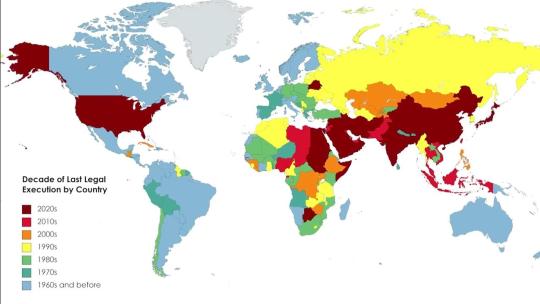
Decade Of The Last Legal Execution By Country
189 notes
·
View notes
Text
WARNING: NSFW
IDF carries out field executions on refugees.
The abuser pushes boundaries, and pushes boundaries, and they know they will get away with it. #SummaryExecutions
86 notes
·
View notes
Text
Unethical Executions in April
Micheal Smith is being executed in Alabama despite having an intellectual disability that would disqualify him from the death penalty in any other state. The only reason he is still being executed is because of a few confusing technicalities in Oklahoma law.
Petitions Here:
Letter Writing Campaigns for oklahoma residents here:
Missouri is slated to execute Brian Dorsey despite his claims of ineffective counsel and the fact that he is picture of remorse and rehabilitation: he turned himself over to the police and pled guilty, has had a flawless prison record, currently resides in the honor ward while working as a prison barber (a highly coveted job only given to trust worthy inmates), and has about 60 prison staff members advocating for the commutation of his sentence.
Petitions Here:
Letter Writing Campaigns and other actions for Missouri Residents here:
https://www.archstl.org/missouri-bishops-others-request-clemency-for-brian-dorsey-first-inmate-to-be-executed-this-year-9478
#missouri#oklahoma#oklahoma politics#missouri politics#death penalty#end the death penalty#signal boost#anarchism#anarchy#current events#criminal justice#criminal justice reform#progressive politics#progressivism#leftist#leftism#leftist politics#progressive#wrongful execution#execution tw#Execution#Oklahoma execution#Missouri execution#Micheal Smith#Brian Dorsey#Save Micheal Smith#Save Brian Dorsey#true crime#Executions#Stop executions
27 notes
·
View notes
Note
Ned won't disapprove of Bran or Sansa not swinging the sword themselves because he is not intentionally sexist or ableist, its just that it never crosses his mind that a disabled person or a woman would ever become a lord or a king. He didn't state a hard and fast rule to be a true Stark that automatically discredits anyone who is not able to follow it (he was actually teaching his son that it is a manganimous duty to take a life and it should not be taken lightly, that was the true spirit of the quote) in fact claiming it as such is being intentionally sexist and ableist.
I agree. People singling out the sword part of the quote and ignoring the more important aspect about judgment and communication is folly. And it's intentional folly, purposefully pretending a sexist and ableist meaning into the scene, in order to try and exclude characters specifically on sexist and ableist grounds.
It's also funny, if they ignore the hilarious way that sword-swinging Ned himself actually failed to give proper consideration to Gared's words, failed to investigate what would cause a seasoned ranger twenty years on the Wall to "go mad", failed to follow up any of it before killing him. The literal witness that could have changed it all. A few hours before casually telling Cat how the Others probably never existed. He heard his last words, he looked into his eyes, and he cut off his head with his own hands and sword. Was he doing a good job there? Was he living up to the legacy of House Stark, the North and the old way?
Maybe the sword swinging is the least important aspect of it all.
84 notes
·
View notes
Text



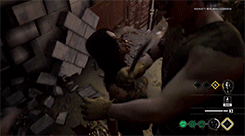





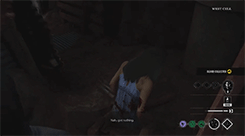


The Texas Chain Saw Massacre executions:
Johnny
#the texas chain saw massacre#the texas chainsaw massacre#texas chain saw massacre#texas chainsaw massacre#tcm#tcm game#texas chain saw game#texas chainsaw game#texas chain saw video game#texas chainsaw video game#tcm johnny#texas chain saw johnny#tcm execution#tcm family#texas chain saw family#mine#executions
69 notes
·
View notes
Text
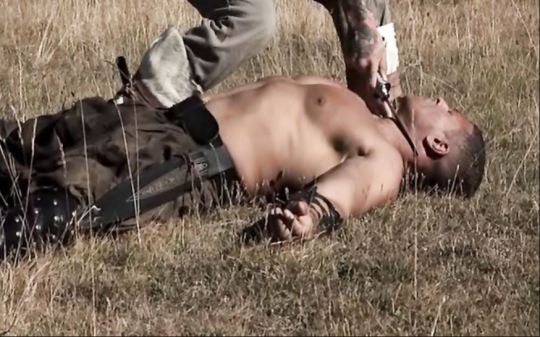


Knives out_2
28 notes
·
View notes
Note
(sorry if this sounds too weird lmao)
do you happen to have any ideas on how cybertronians would be executed in the past and present? I feel like it isn't really touched on in canon (from what i've consumed atleast)
Dude no this is right up my alley. This is the kind of worldbuilding every good universe needs.
Thank you @spreadwardiard for helping me brainstorm this concept :D
═════════════════
During the first age that came after the Primes fell and long before the Quintessons made their claim, executions were rare and a very solemn affair. Predacons were a far greater threat than any mech who lived alongside the groups of Cybertronians who roamed the surface, desperate to survive but one more cycle. Despite that, there were still times when using force to eliminate a threat too great was required. Not a spark looked on the act fondly, especially since in those days redemption was something that every mech was willing to try and assist in making come to pass.
However there were simply some times when eliminating an internal threat was required, and when those times came, it was taken very seriously. The mech who was to meet their end would first be granted one small final wish, be it to visit a place or to meet someone. After that they would be prayed for by all who cared for them and given the chance to make their final declaration before all those who they once resided with. From there the mech would be given a good last meal before being taken out into the wilds to the most beautiful spot known to their executioners. Only once to mech to meet their end had time to take in the glory of the world they left behind would they be swiftly and painlessly executed through either swift acting toxins or manual system shutdown.
This was the way executions were done. It was solemn and not a spark took joy in it. The loss of life was to be lamented, not praised, no matter the crime. But once the Quintessons came, executions changed to suit their desires.
Executions became more frequent and turned into a way of making a statement. The Quintessons started making shows of deaths they ordered, having the 'guilty' mecha presented on a stage before being cut down by blade or blaster. There was no reverence or solemn sorrow, no, instead all the deaths did was inspire fear. However under the Quintessons, it was not death the people of Cybertron feared. Compared to the dark and cruel things that could be done to the living, those who lost their helms to a sword were far better off. Not a spark wanted to be one of the unfortunate few cursed to endure empurata or processor alterations.
Death was, by comparison, a mercy. Executions under the Quintessons were to make a point, but they were still rather rare as the Quintessons much preferred turning troublemakers into their personal tools. It was enough to keep most in line.
Under the council though? Executions turned from being simply cold to downright cruel. Mecha were rarely killed outright, for that would be too simple and look too much like the Quintessons public methods of execution. No, mecha who earned the ire of the council were often given round about methods of the death sentence. Being sent down to do hard labor in the mines looked like a mercy to the public when in reality those sent there rarely came back alive. Being thrown to fight in the pits was nearly guaranteed to kill a mech with how brutal and rigged combat was. Then of course there were those who simply vanished under mysterious circumstances or happened to be 'sent off world' only to never be seen again.
Deaths under the council were rarely public, but they were present and quite common. To be killed outright was a mercy rather than being sent to the pits or the mines, much less to the medical centers for the council. Mecha remembered the Quintessons meddling, and the council were not afraid to follow in the pedesteps of their former overlords in some regards.
When the war started, death became so commonplace that executions were largely regarded as a part of life. Depending on the era of the war and the stakes, executions were more brutal or tame. When things were at their worst, executions were used as a way to improve morale to a degree, to give soldiers a sense of victory and closure after all the harm done. Torture tended to come first, then death by the blade of a mech who earned the right or was burdened with the task of ending the life before them. The Autobots leaned more toward quick deaths by blade and the Decepticons toward drawn out deaths to make a statement. But neither were very consistent in their methods and many grotesque ends came about from both factions.
During the war, death was more common than life. It was revered in a strange way and taken to the extreme when times were tough. Executions lost their fulfillment long ago, with little regard given to the loss of life after so long desensitized to it.
#transformers#maccadam#transformers prime#pre war cybertron#cybertronian culture#death#executions#autobots#decepticons#this was interesting to consider#thinking about how much meaning was lost over time#so long spent with death being the norm#it must have changed things
41 notes
·
View notes
Text
Gov. Jeff Landry signed into law Tuesday a bill allowing executions by nitrogen gas and electrocution, opening the door for Louisiana to revive capital punishment 14 years after it last used its death chamber.
Landry signed the legislation, House Bill 6, and 10 other bills into law while surrounded by crime victims' loved ones and law enforcement officials in a ceremony at the State Capitol. HB 6 also shrouds records of the state's procurement of lethal injection drugs in secrecy, a step supporters say will make it easier to obtain those drugs.
The death penalty bill headlined a slate of tough-on-crime legislation approved by the Republican-controlled state Legislature last month and championed by Landry, a Republican and former state attorney general who campaigned on a promise to punish criminals and uplift people affected by violent crime. The new laws reverse a path charted by the state's 2017 Justice Reinvestment Initiative by slashing chances for convicted criminals to be released from prison early and lengthening sentences for some crimes.
"This is what I ran on," Landry said Tuesday.
The Governor also signed bills that allow people to carry concealed handguns without permits, eliminate parole for adults who commit crimes after Aug. 1, dramatically cut the availability of good behavior credits in prison and limit how people can request plea deals after their convictions, among others.
Landry is expected to sign additional bills passed in last month's special session in New Orleans on Wednesday, including measures to publish court minutes for youth accused of violent crimes, increase penalties for carjacking and weapons offenses and give Landry more control over the state's public defense system.
Protests against that legislation — particularly the death penalty bill, which opponents caution promotes one method that has hardly been tested and another ruled inhumane by courts in some states — spurred fiery debate but did little to sway lawmakers, most of whom fell in line with Landry's agenda.
A series of criminal justice advocacy groups spoke out against the new laws again on Monday, saying they will do little to curb crime and risk bloating the state's prison population to pre-2017 levels.
The 2017 public safety laws, which drew bipartisan backing and support from law enforcement, released people with convictions for nonviolent crimes and saved the state some $153 million, a recent audit found.
"Blaming the wrong problems doesn’t get the right solutions, and our communities for years have made clear the solutions necessary to address the very real concerns and needs of all Louisianans," said Danny Engelberg, the chief public defender in New Orleans. "These misguided bills will balloon our already bloated legal system, jails and prison system, and further widen the inequities in justice, safety, and community well-being."
The first modern execution by nitrogen gas occurred in Alabama in January. It sparked pushback from anti-death penalty advocates who expressed concern about eyewitness reports that Kenneth Smith, who was put to death for a 1988 murder-for-hire, writhed and struggled for air for some 20 minutes after nitrogen began flowing into his mouth. Alabama officials said the execution was humane and offered to aid other states' efforts to put the method to use.
Difficulty obtaining the cocktail of execution drugs from pharmaceutical firms, along with former Gov. John Bel Edwards' opposition to capital punishment and a series of federal court orders pausing executions in recent years, had kept Louisiana from putting anyone to death since 2010.
It's unclear when state officials might begin taking steps to obtain materials needed to carry out executions or when executions could resume in Louisiana. Also unclear is which of the three execution options the state will use; the new law leaves that choice to the secretary of the state's Department of Public Safety and Corrections.
HB 6's sponsor, Rep. Nicholas Muscarello, R-Hammond, said in an interview last month that Landry has indicated that his preferred execution method is lethal injection.
Last week, a DPSC spokesperson referred questions about the death penalty process to Landry's office, which did not respond to requests for comment. Landry left Tuesday's bill-signing ceremony without taking questions from reporters.
The new law letting people carry concealed handguns without permits, which supporters dub "constitutional carry" because they argue it restores an absolute right to self-armament enshrined in the United States' founding document, drew applause from gun rights activists and condemnation from gun safety groups.
National Rifle Association Interim CEO Andrew Arulanandam in a statement praised the "resolve" of Landry and "pro-self-defense legislators" who voted for the new law. Angelle Bradford, a volunteer for the Louisiana chapter of the pro-gun control group Moms Demand Action, criticized Landry for "cater(ing) to the gun lobby and reinforc(ing) their deadly ‘guns everywhere’ agenda."
#us politics#news#nola.com#2024#louisiana#Gov. Jeff Landry#capital punishment#executions#nitrogen gas#electrocution#criminal justice system#parole#concealed carry without permit#concealed carry#gun laws#Kenneth Smith#John Bel Edwards#Rep. Nicholas Muscarello#Louisiana Department of Public Safety and Corrections#conservatives#republicans#gop
8 notes
·
View notes
Text
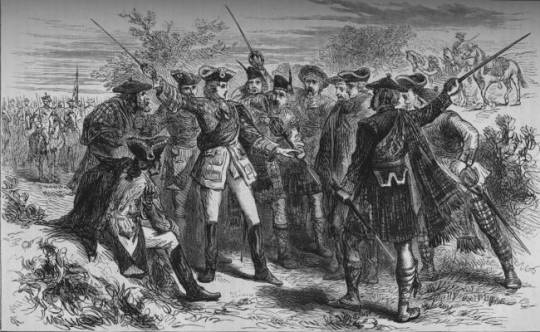

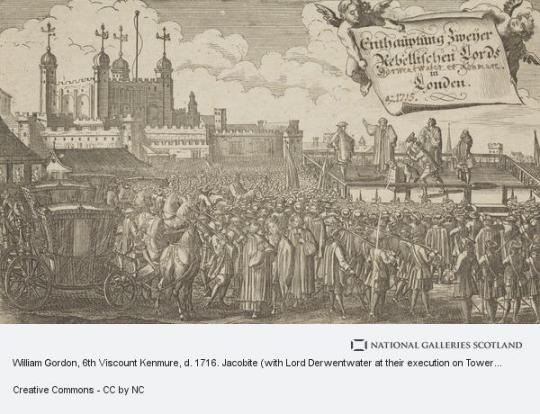
On 7th February 1716, the Jacobite army disbanded at Aberdeen, ending the 1715 uprising.
James Francis Edward Stuart had fled to France with many leading Jacobites three days earlier and it would be almost thirty years before his son Charles would try to claim the throne.
When Queen Anne, the subject of yesterdays post, died on August 1st, 1714, inadvertently fulfilling her ancestor James V’s prophecy about the House of Stuart – “it cam wi’ a lass, it’ll gang wi’ a lass.” The Stuarts had ruled over Scotland and then the United Kingdom since 1371, and the end of the dynasty was viewed by many Scots as a tragedy.
Her successor George I, Elector of Hanover, arrived in London seven weeks later to claim his throne, but there was already considerable resentment against him because Scotland were imposed with the Hanoverian succession – there would be no separate crowning at Scone for this King of Scots.
Yes there had been another uprising a few years before, but historians all agree that the ‘15 was the best opportunity to put their monarch of choice back on the throne.
James’s cause in the west of the highlands proved unattractive at first, but Aberdeen, Dundee and Inverness fell to Mar without a shot, the only major stronghold north of the Tay that was still in Hanoverian government hands was Fort William.
Perth was captured in late September but a lighting raid on Edinburgh Castle by a small detachment of Jacobites failed – reportedly there were enough arms and cash deposits in the Castle to equip half an army.As it was, Mar now had thousands of troops under his command and James Stuart, who had no prior knowledge of the rising, made him his commander – but where was the ‘king’ himself? James was agitating with the French government to give him men and ships to no avail, but in Scotland and England, the rising was already well under way.
Against Mar stood only the troops under the Duke of Argyll’s command, and they were surely too few in number to stand against the Jacobites, even though reinforcements came from the Hanoverian garrison in Ireland.The Jacobite lords of Northumberland had risen, and were supposed to meet up with a force heading south through the west coast of England. This consisted of English Jacobites and a force from the Scottish Borders and at first they, too, swept aside all resistance.
However their ambitions were thwarted following their failings at the Battle of Sheriffmuir, and Bobbin John’s inadequacies as a leader in not pressing home the advantage, The Earl of Mar, to give him his real name, was by nature a ditherer, inexperienced in command and reluctant to advance without having an overwhelming force.
Argyll’s army was outnumbered two to one but he had experienced and battle-hardened troops under him, as well as a superior cavalry force. Mar’s Jacobites were inexperienced in mass pitched battles, and their commander was no strategist.
The tale of the Battle of Sheriffmuir on November 13, 1715, is simple – both right wings smashed through their opponents, the clans’ highland charge sending the government army into flight.
Crucially, they lost discipline and chased after the fleeing force and without those troops, Mar decided to hold his ground because Argyll’s right wing had beaten the Jacobite army’s left wing, albeit with heavy losses.
Mar may not have known that Argyll was down to around 1000 effective troops and that victory was his for the taking. Whatever the reason, Mar did not press home any further attack and though he claimed victory because there were slightly more dead Hanoverian soldiers than Jacobites, the strategic advantage had been lost and the Rising in Scotland had effectively been halted.
At the same time in England the Jacobites were beaten at Preston, ending their part in the Uprising.
It was over a month before James Stuart arrived in Scotland on a single ship with no soldiers and no clear idea what he wanted to do. Argyll sat waiting for reinforcements, while many of Mar’s troops went home to bed down for the winter.
The Jacobite King was devoid of command skills and charisma, and was also sick, which forced him to cancel a planned coronation at Scone and return to France, where he had been living under the protection of King Louis XIV of France, he never set foot in Scotland again, and it would be up to his as of then unborn son to try nearly 30 years later.
While the '15 Uprising may not be engrained in the Scots psyche, like the '45 is, their were severe ramifications for some, and executions of ringleaders followed, the most notable being the William Gordon, 6th Viscount of Kenmure, and James Radclyffe, the Earl of Derwentwater. Other notable Jacobites forfeited their titles and lands.
There's loads more on both Uprisings on a PDF here Y https://www.aberdeencity.gov.uk/sites/default/files/2020-09/Jacobite%20Trail.pdf
12 notes
·
View notes
Text
It's a hanging matter this time.”
“Sir Eustace is dead, then?”
“Yes; his head was knocked in with his own poker.”
Ouch. I guess the murder was not planned, then, considering the choice of weapon.
I researched until when hangings took place in the UK. The last execution by the gallows (and also in general) was in 1964. Which is much later than I would have thought. Prior to reading Sherlock Holmes, if you'd have asked me until when people were hanged I would have said something like the 17th or 18th century.
From this guardian article:
As they were led to the gallows there was little fuss. No public outcry, no headlines indicated that the executions of Gwynne Evans and Peter Allen would be remembered as anything other than run-of-the-mill.
Evans, 24, and Allen, 21, were unlucky with their timing. Two months after they were executed Labour came to power, bringing a Commons vote to suspend capital punishment for five years in the 1965 Murder Act, a move made permanent in 1969.
At the time of their convictions, the 1957 Homicide Act had already removed the automatic death penalty for all murders, though exceptions included any murder committed for theft.
The criminologist Steve Fielding, author of more than 20 books on British hangings, believes the lack of publicity was due to the fact that, by sensationalist standards, the Evans and Allen murder was "quite low key".
The two jobless Preston men travelled to the Cumbria home of John "Jack" West, a 53-year-old laundry van driver known to Evans, in a stolen car with Allen's wife and two children, on 7 April 1964. The two planned to rob the bachelor, but then killed him.
In the Netherlands the last execution by hanging happenened in 1860, in Maastricht, so more that 100 years earlier. (The only executions after that took place in the aftermath of the Second World War and were committed by gun) That is a wild difference.
I also found this interesting article on the Museum of London website:
During the early 19th century, Britain removed the death penalty for a wide range of crimes, including pickpocketing, forgery and rape. By 1861, the number of capital crimes had been reduced to five, including murder, treason, espionage, arson in royal dockyards and piracy with violence. Other reforms included the banning of public executions in 1868, and the abolition of beheading and quartering in 1870. The age at which a person could be executed was also raised first to 16 and then 18 in 1933.
Prior to World War II, an attempt was made in Britain to abolish the death penalty, but the outbreak of war, defeat in the Lords and fears about public reaction caused the government to shelve the proposal. In 1957, public doubts about high profile cases such as Timothy Evans and Derek Bentley eventually led to the 1957 Homicide Act that reduced the categories of murder that could be punishable by death. In 1965, the death penalty for murder in Britain was suspended for five years and in 1969 this was made permanent. However, it was not until 1998 that the death penalty in Britain was finally abolished for all crimes.
#letters from watson#sherlock holmes#the abbey grange#history#capital punishment#criminal law#hangings#executions
16 notes
·
View notes
Text
#OTD in 1922 – In reprisal for the executions, Liam Lynch, Anti-Treaty IRA Commander, issues a general order to his forces to kill members of the Dáil (T.D.s) and senators who had voted for the Emergency Powers legislation.
In response to the executions, on 30 November, Liam Lynch, Chief of Staff of the Anti-Treaty IRA, ordered that any member of Parliament (TD) or senator who had signed or voted for the ‘murder bill’ should be shot on sight. He also ordered the killing of hostile judges and newspaper editors. On the same day, three more Republican prisoners were executed in Dublin.
On 7 December, Anti-Treaty IRA…

View On WordPress
#anti-Treaty#Co. Tipperary#Crohan (near Clogheen)#Dáil#Executions#IRA#Irish Civil War#Joe McKelvey#Liam Lynch#Liam Mellows#Pádraic Ó Máille#Richard Barrett#Rory O&039;Connor#Seán Hales
7 notes
·
View notes
Photo

Number of executions worldwide 2022
by u/23degrees_io
101 notes
·
View notes
Text
youtube
Executions: Last Week Tonight with John Oliver (HBO) [source]
"John Oliver reveals new information about the methods used to carry out the death penalty, explains why there is no good way to do lethal injections, and offers a new, unexpected use for peanuts. John swears it’s normal, we beg to differ." [28 min 30 sec]
3 notes
·
View notes
Text












The Texas Chain Saw Massacre executions:
Sissy
#the texas chain saw massacre#the texas chainsaw massacre#texas chain saw massacre#texas chainsaw massacre#tcm#tcm game#tcm video game#texas chainsaw game#tcm sissy#texas chainsaw sissy#tcm execution#tcm family#texas chainsaw family#mine#executions
98 notes
·
View notes
Text
youtube
Executions: Last Week Tonight with John Oliver (HBO)
2 notes
·
View notes